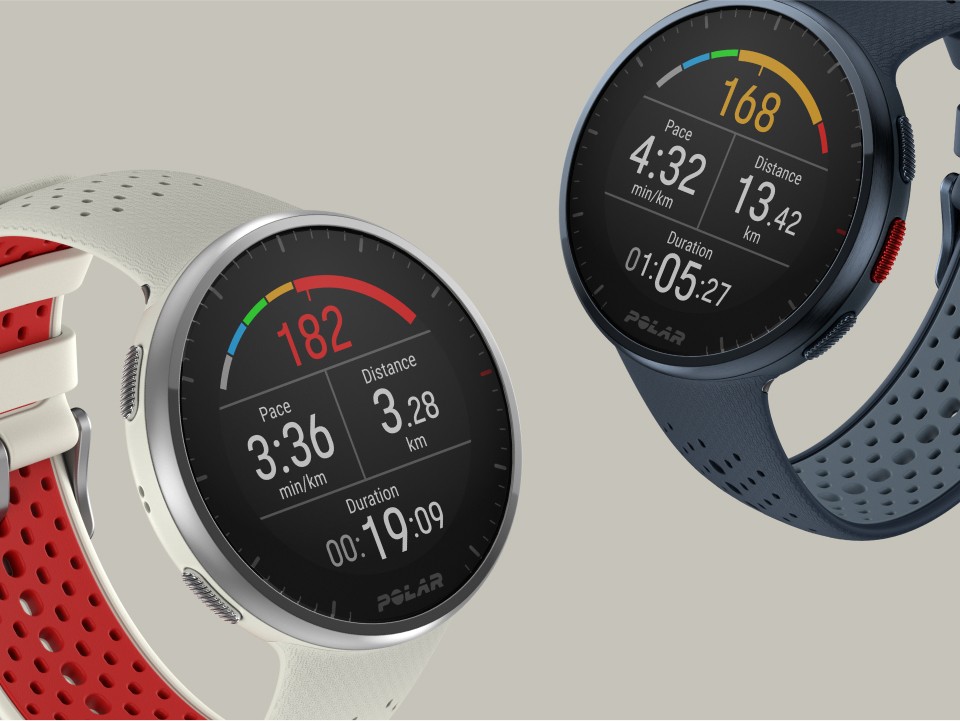Tempo training – what is it actually? If you want to jog, cycle or swim faster and maybe even aim for competitions in the long term, speed training is an integral part of your overall training. But how exactly does tempo training work? What do heart rate zones four and five have to do with it? This article will reveal everything you need to know about this training method and your two highest heart rate zones.
WHAT IS TEMPO TRAINING, AND WHY IS IT SO USEFUL?
Tempo training consists of intense workouts that challenge you to push yourself to the max. Adding regular tempo workouts to your training plan will help to increase your pace and are especially useful for improving your competition times.
In my previous article, we learned how basic endurance training helps to improve the oxygen transport in your body, enabling you to withstand exercise for a long time. This type of workout is aerobic and should make up a large part of your training plan.
On the other hand, competitions and intensive workouts occur in the anaerobic zone, which means a different form of energy metabolism. Your body adapts to get its energy from carbohydrates, which will give you a boost in power but also means that a lot of lactate is produced. To put it very simply, lactate is a waste product of energy production from carbohydrates, which in turn leads to hyperacidity.
Tempo training takes place in the two highest heart rate zones and should be approached with care. With this kind of speed training, you train your mitochondria (the “power plants” of your cells) and optimize energy generation from carbohydrates. Tempo training also increases your tolerance to lactate.
In the long term, this form of endurance training helps you work out more intensively and perform faster. You learn to deal better with intense stress and to maintain it longer. That’s why tempo training is an integral part of any race preparation.
TEMPO TRAINING – THE HEART RATE ZONES
We usually focus on speed and heart rate when it comes to tempo training. These metrics help us to move at the right pace for our target time and maintain consistency, and at the same time, monitor the training load.
If you go solely by speed, you risk overexerting or under-exerting yourself. By also training with heart rate, every minute of your tempo training counts towards your progress.
THE HEART RATE ZONES FOR YOUR TEMPO TRAINING ARE THE LAST TWO ZONES ON YOUR POLAR WATCH:
- Orange (zone 4)
- Red (zone 5)

THE ORANGE HEART RATE ZONE – HARD AND CONSTANT

The fourth heart rate zone corresponds to BE2 (basic endurance training 2 – sometimes referred to as GA2). This orange heart rate zone is 80-90% of your maximum heart rate, making it the lower half of your tempo workouts.
In this training zone, you optimize your speed endurance. Your body improves its ability to get energy from carbohydrates and increases its tolerance to lactate. Your body no longer has enough oxygen available, as the training is strenuous, so you feel your muscles slowly getting heavier. Your breathing is deep and intense.
Those completely new to training often exercise mostly in this zone at the beginning. However, it is too intensive and very stressful in the long term. You quickly reach your limits, feel exhausted, and can no longer improve. Therefore, these training sessions should only take up a small part of your weekly training plan and are more suitable for more advanced athletes.
WORKOUTS YOU CAN DO IN THE ORANGE HEART RATE ZONE:
- Tempo endurance running
- Intense cycling or swimming
- Rowing
- Circuit workouts
- Crossfit
- Load peaks in strength training
- Competitions from 10 kilometers to marathon
THE RED HEART RATE ZONE – SHORT AND MAXIMUM

The fifth heart rate zone is your maximum zone in training. This red heart rate zone is 90-100% of your maximum heart rate and is therefore very intense.
This tempo training improves your maximum performance and prepares you for the highest loads. Here you only get your energy from carbohydrates, and your muscles no longer have any oxygen available. That is why a lot of lactate accumulates in a very short time.
This form of training feels very hard. Your legs get heavy quickly, and you rapidly become exhausted.
WORKOUTS YOU CAN DO IN THE RED HEART RATE ZONE:
- Interval training while running
- Competitions up to ten kilometers
- HIIT
- Crossfit
Training sessions in this zone should be integrated into your routine a maximum of two to three times a week. They are very short and challenging and require a lot of recovery time!
CONCLUSION
The two highest heart rate zones help you to become more resistant to stress and to optimize your energy supply. In this way, they make you faster and more efficient for your next competition in the long term.
Before you start with targeted speed training in heart rate zones four and five, it is essential that you have trained enough basic endurance in BE1. These less intense sessions should always make up at least 80% of your training plan.
Many endurance athletes unknowingly spend too much time in the orange heart rate zone. Training with a heart rate monitor helps you to manage these sessions better and get more out of your efforts in the long term.
If you liked this post, don’t forget to share so that others can find it, too.
Or give it a thumbs up!
I like this article
Please note that the information provided in the Polar Blog articles cannot replace individual advice from health professionals. Please consult your physician before starting a new fitness program.





